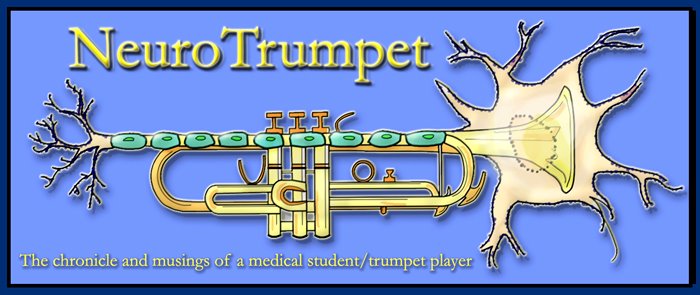I knew something was wrong when I saw the green goo, but I significantly underestimated how severe our problem was.
Today in anatomy lab, our task was to cut into the abdomen and explore the structures inside (e.g. mesentery, intestines, stomach, liver, spleen etc.). It sounded so simple. The first few steps involved making a cross-shaped incision in the abdominal wall out through the umbilicus (belly button) and reflecting the layers back to reveal the viscera.
Carefully trying to avoid damaging the underlying omentum, I made my first incisions very superficial. Then, on the third stroke:
“Whoa…”
Green goo. Oozing out of the incision.
“Is that bile? That’s impossible! There’s no way I cut that deep!” Bile is stored in the gall bladder, which is located on the inferior surface of the liver.
The four of us stared at each other with bemused expressions.
We continued to open the peritoneal (abdominal) cavity, becoming increasingly aghast at the deep green soup saturating the intestines and pooling in the crevasses between.
“This doesn’t make any sense. Maybe her gall bladder exploded post-mortem?” one group member suggested.
We called over one of the doctors, who explained that the embalming process sometimes increases the pressure inside the gall bladder, causing it to burst.
I sighed some relief. At least it wasn't my fault.
Noting that our misfortune was par for the course, we continued the dissection resigned to the fact that our internal organs would be dyed green. No big deal, right?
“Wait, what is that thing? It can’t be the omentum. Wait… where is the greater omentum? It should be right here on top!”
Rather than seeing the expected fatty, vascularized extension of peritoneum that covers the intestines, we saw this huge, hard, green (from the bile spill) brick-like thing just under the peritoneum.
After some wild conjecture, we looked at one another with hopeless expressions and called the doctor over once more.
“Whoa,” he said. Glad we weren’t the only ones with that reaction.
He spent a few minutes exploring the cavity, trying to understand what we were seeing. Eventually he reached several conclusions:
1) The huge brick-like object was impacted colon (it must have more than quadrupled in diameter).
2) The omentum had fused to the parietal peritoneum and begun to disintegrate, which is why we didn’t see it.
3) It was a mess.
For whatever reason—perhaps related to metastatic ovarian cancer—Bertha was extremely constipated. Perhaps for the same reason, the omentum tried to contain this growing mass in the abdominal cavity by growing around it to seal it off from the rest of the viscera. We actually learned earlier that day that this is a useful function of the greater omentum: it can form adhesions to adjacent inflamed organs to partition it from the other viscera.
At any rate, what ensued was the most horrific sequence of events I hope to experience in anatomy lab. We had to remove the impacted colon so that we could gain access to the rest of the abdomen and—hopefully—continue with our dissection.
It’s difficult to be sure, because the anatomy was altered so much, but we think the affected portions of colon included the transverse, descending and sigmoid segments (altogether a significant portion of large intestine). The rest of the colon was impacted as well, but not as distended as the more distal regions.
We tied off the most obstructive part of impacted colon with string and used a scalpel to snip it out. Perhaps “snip” is the wrong verb, though. It was about the diameter of a lower leg.
But the knots of the string didn’t do the trick. They slipped off the cut edge. What now?
We milked the feces out of the colon in order to better tie it off.
Yes. I helped to milk several pounds of green, bile-stained feces out of an impacted colon.
Although the experience totally grossed me out (though we all kept our equanimity), I couldn’t help thinking about how much pain the living Bertha suffered. “Excruciating” would surely be an understatement. This sobering notion helped to remind me of the respect we must afford the cadavers. One of the most offensive things we can do is to lose our composure.


This reminded me of the enlarged colon at the Mütter museum in Philly. I'm enjoying your posts though!
ReplyDeleteSame reminder here - that colon was enormous. And I definitely lost my appettite after reading that, so I'm glad I didn't bring lunch today :)
ReplyDelete"the omentum tried to contain this growing mass in the abdominal cavity by growing around it to seal it off from the rest of the viscera."
ReplyDeleteAndrew, this 'containment' probably saved my sister's life in 2007 when she had to have an emergency appendectomy. Later the same year I had my gall bladder (no worry for embalmers) removed and it too did not present normally (but it was adhesion ridden, what's normal about that?)
Truly interesting blog!!!
Vile bile, such a trial, yet all is still worthwhile!
ReplyDeleteHmmm, you were right. Consumption of thick soup and reading about "milking feces" probably shouldn't happen concurrently. Good thing it's not split pea.
Hope the rest of the dissection goes more...cleanly?
One horrendous side effect of the narcotics that people get for cancer pain (and other pain) is constipation. It is about the only side effect that the body doesn't adjust to. It can be horrible.
ReplyDeleteAs a medical student you will become used to many awful things that can be produced....
POP
Your dad knows.....